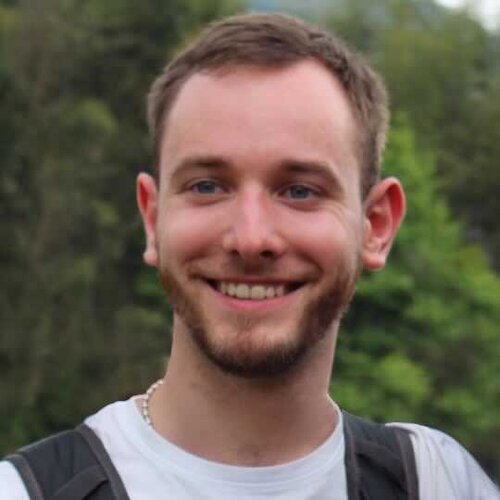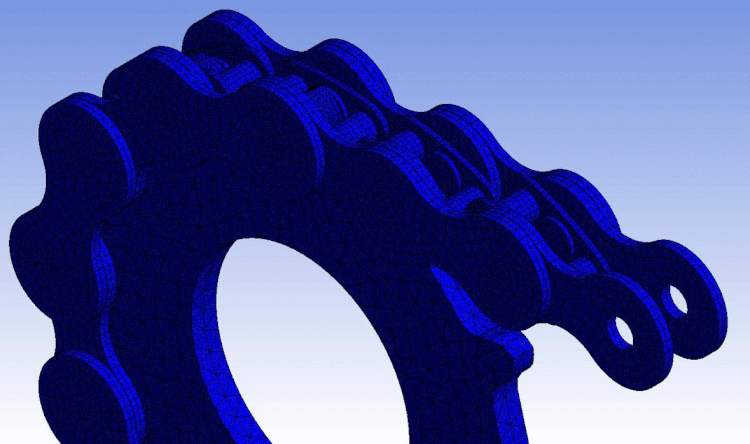Samira and Gvidas Talk Weight Optimisation and Parameterisation

Tell us a little about your backgrounds.
Samira: I recently graduated from university with a Bachelors in mechanical engineering. During my time at uni, I took part in a variety of extracurricular projects ranging from fluid mechanics – modelling IgG in the bloodstream – to more typical mechanical engineering projects, such as working on solar cars.
They were essentially race cars, which we got to drive around in, so that was a pretty cool project. My main engineering interests though have always been simulation and modelling.

Gvidas: Academically, my background is mechanical engineering. Throughout my degree, I took part in many engineering projects, such as building a race car from scratch to race at Silverstone as part of Formula Student and converting regular shipping containers into environmental chambers as part of my dissertation.
That was a very interesting experiment as it wasn’t something people were really doing at the time. I’m also a climber and a cyclist and do a lot of 3D printing.
And since you’ve been interning at New Motion Labs, what have you been working on?
Samira: I’ve worked on a variety of things so far, including coding with Matlab to simulate trajectories.
I’ve also worked a lot on modelling and simulation, specifically modelling parameterisation – we have created an Excel spreadsheet that automatically updates our model whenever we change the numbers in it.
This is a brand new skill that I’ve learned during my time at New Motion Labs, so it’s been very exciting to work on.
What exactly do you use the modelling parameterisation Excel spreadsheet for?
Samira: Initially we used it to model chains of different sizes to create a Dual Engagement chain that had almost the same dimensions as a regular roller chain. More recently, we used it to help us with weight optimisation – changing parameters in order to reduce the weight of our product based on calculations.
Why is there a need to optimise the weight of the chain?

Gvidas: In the most simple terms, you don’t want a heavy chain.
We’ve been working to lower the weight of the chain as much as possible, while maintaining the same stresses so that it behaves the same as the heavier chain, it’s just lighter.
The reason why you would want a lighter chain varies between uses. Take a track cyclist, for example, if you’re trying to win a gold medal, any amount of weight you can shed from your bike is beneficial.
You want to minimise the weight as much as possible so that you don’t have to put as much effort into pedalling, which means you can go faster and are more likely to win that gold medal.
That makes sense for track cycling. What about other applications?

Gvidas: One of the bigger scope projects that would benefit from lighter chains is machine-driven manufacture.
Machinery uses bulky, more robust chains that are designed to have longer lifetimes.
A lighter chain will have an even longer lifetime still.
A factory has a lot of machines – a lot of chains – so shedding a few percent off of the weight of each individual chain translates to a large weight loss and longer lifetime overall, plus a reduction in the frequency of necessary maintenance.
The images look quite complex. Did you run into many challenges creating this parameterisation tool?
Samira: Definitely. We were using a basic tool – Excel – to do mass optimisation, which would usually be done in ANSYS, a much more complex and complicated tool.
The biggest challenge was scaling down such a huge analysis into something more condensed, so that it could be performed in Excel.
Coming up with some of the equations that would be able to accurately translate the stresses, without being too complex, was also challenging.
Gvidas: But, the challenges were worth it because by using Excel, rather than ANSYS, we gained greater control as we were essentially creating the programme that we needed, rather than telling ANSYS what we wanted and perhaps finding out it wasn’t possible.
In regards to the skills that you have developed throughout your internships, what’s been the most beneficial do you think?
Gvidas: For me, it’s not necessarily one particular skill but a process.
I’ve learned the process of how to develop a problem that, at first glance, looks either very challenging or potentially impossible by breaking it down into lots of little actions.
For example, for this project, we had lots of regular brainstorming sessions at the conception stage, these ideas then eventually converted into equations, then dimensions.
I found that by talking through the problem frequently and making sure that we were all talking about the same thing and moving along at the same rate, was one of the most important parts of understanding the project and eventually coming up with the solutions that we have.
Samira: I’d agree with that, but would add one more thing: thought process organisation. In projects like this one there are so many calculations and elements to it that it’s very easy to get lost in your own thought process and eventually come back full circle without reaching a result.
And even with the Excel file itself, there was a lot of number crunching and formulas that it was very easy to get lost in. So I had to learn how to organise and categorise efficiently.
What do you think is the future for this automated chain design tool and Dual Engagement technology?

Gvidas: I guess I touched on it earlier, towards manufacturing. I see our technology having a profound impact in the manufacturing industry.
Samira: I also see the parameterisation tool expanding to give the consumer or the buyer a lot more choice.
I think it’s a unique way to offer our customers and licensees exactly what they want, rather than them having to choose from a set range of products.








